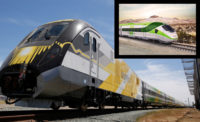
The construction industry finds itself straddling two very different worlds.
On one hand, the relationships-first business mindset is still an integral part of winning repeat business, yet on the other, decades-worth of institutional knowledge begins to fade with new leaders rising in firms faced with manual processes tied to business pursuit details. While firms still rely heavily on a generation of workers who remember what the business was like before the Internet, the focus today is on future-proofing the business, an undertaking that will rest mostly in the hands of a younger, digitally forward breed of employee.
For firms that are proactively planning based on the realities of an aging workforce, the challenge goes beyond merely reconciling these two distinct worlds. Their growth depends on them finding ways to not only blend the traditional — and still highly relevant — relationships-first way of doing business with the digital-first sensibilities and savvy of younger members of the workforce, but to get the best of both worlds.
Instead of widening the perceived divide within the construction workforce, digital technology can be a force to bridge it. Counterintuitive as that might seem, we’re seeing first-hand in our work with architects, engineers and contractors that digital systems for enterprise resource planning (ERP), client relationship management {CRM) and the like are not only improving collaboration across entire companies, they’re being widely embraced by the younger and older members of the workforce alike.
That embrace isn’t a given, however. For people to consistently engage with the digital capabilities available to them (and thus drive return on investment on a firm’s tech investments), those tools have to be easy for them to access and use, and ultimately, help them to do their jobs better. Here are five keys to making that a reality in your firm:
1. Tight digital integration across the business: Integrations are the connections that enable disparate software systems to function as a single digital ecosystem, seamlessly interacting and sharing information with one another without compromising functionality or data quality — and without requiring extra steps by the user.
It’s simple: Provide digital tools that deliver a high-quality user experience and your people, regardless of generation, will engage with them, because those tools meet them at key points in their work and ultimately help them to do their jobs more efficiently and effectively. Integrations are key to providing that elevated digital experience. They eliminate silos, giving your employees friction-free, integrated digital experiences, driven by data-powered insight.
As we’ve seen first-hand, professionals, regardless of age, tend to embrace tools that relieve them of the hassle of working with disparate applications to clunkily manage processes and information. So, seek out digital systems (ERP, CRM, etc.) that offer an open platform for integrations and automation, giving your firm all the pieces to create a fully integrated digital ecosystem. As an employer, this is how to deliver the workplace experiences that younger segments of the workforce demand, and that your older employees should come to embrace.
2. Smart, mobile technology to-go: AEC firms depend heavily on their employees’ ability to work remotely from a job site, in the field or (nowadays at least) from a home office. Because of that, it’s critical they equip their people — those who wear business development, project management and other hats — with technology solutions that extend to mobile, affording them access to business resources, in real time, without additional manual steps, from their chosen device, so they can make better-informed decisions, wherever they happen to be working in the moment.
3. Purpose-built systems for the business you’re in: In our experience, architects, engineers and contractors are more likely to adopt and use digital tools that fit the project-based business they’re in, rather than generic solutions that don’t map to their processes, workflows and data needs.
4. The means to capture institutional knowledge: Hear that? It could be the sound of decades worth of irreplaceable tribal knowledge escaping your firm as older members of the workforce depart. What you want are systems that encourage the capture and sharing of information, insight and experience from past projects and other tribal knowledge, effectively connecting the dots between the past, present and future of your firm.
5. Focus on people: Here’s the critical change-management aspect of digital transformation. To maximize the impact of your firm’s investment in digital tools, be sure to also invest enough in the right partners to educate your workforce (especially folks who aren’t digitally inclined) about the rationale for using those tools, train them on how they’re used, then keep close tabs to ensure people are consistently getting training and using the tools as intended.
In a business whose future depends on meshing the skill sets and sensibilities of multiple generations with often vastly different perspectives on technology, the edge goes to firms that successfully put these pieces together.
Akshay Mahajan is General Manager of CRM for Unanet, which provides project-based digital ERP and CRM solutions purpose-built for architecture, engineering and construction firms.




Post a comment to this article
Report Abusive Comment